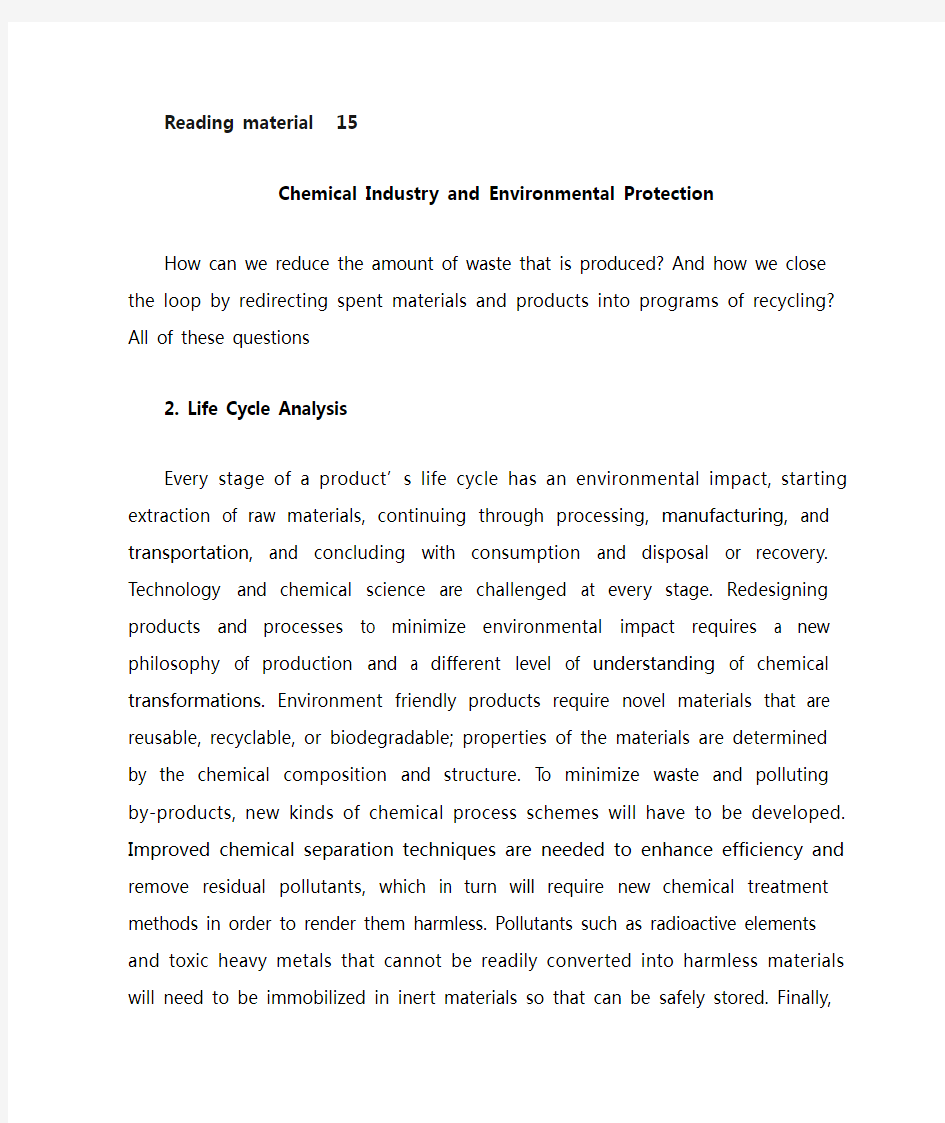
英语作业翻译
- 格式:docx
- 大小:19.88 KB
- 文档页数:4


Reading material 15
Chemical Industry and Environmental Protection
How can we reduce the amount of waste that is produced? And how we close the loop by redirecting spent materials and products into programs of recycling? All of these questions
2. Life Cycle Analysis
Every stage of a product’s life cycle has an environmental impact, starting extraction of raw materials, continuing through processing, manufacturing, and transportation, and concluding with consumption and disposal or recovery. Technology and chemical science are challenged at every stage. Redesigning products and processes to minimize environmental impact requires a new philosophy of production and a different level of understanding of chemical transformations. Environment friendly products require novel materials that are reusable, recyclable, or biodegradable; properties of the materials are determined by the chemical composition and structure. To minimize waste and polluting by-products, new kinds of chemical process schemes will have to be developed. Improved chemical separation techniques are needed to enhance efficiency and remove residual pollutants, which in turn will require new chemical treatment methods in order to render them harmless. Pollutants such as radioactive elements and toxic heavy metals that cannot be readily converted into harmless materials will need to be immobilized in inert materials so that can be safely stored. Finally, the leftover pollution of an earlier, less environmentally aware era demands improved chemical and biological remediation techniques.
must be answered through careful research in the coming years as we strive to keep civilization in balance with nature.
3. Manufacturing with Minimal Environmental Impact
Discharge of waste chemicals to the air, water, or ground not only has a direct environmental impact, but also constitutes a potential waste resources. Early efforts to lessen the environmental impact of chemical processes tended to on the removal of harmful materials from a plant’s waste stream befor e it was discharged into the environment. But this approach addresses only half of the problem; for an ideal chemical process, no harmful by-products would be formed in the first place. Any discharges would be at least as clean as the air and water that were originally taken into the plant, and such a process would be “environmentally benign.”
Increasing concern over adverse health effects has put a high priority on eliminating or reducing the amounts of potentially hazardous chemicals used in industrial processes. The best course of action is to find replacement chemicals that work as well but are less hazardous. If a substitute cannot be found for a hazardous chemical, then a promising alternative strategy is to develop a process for generating it on-site and only in the amount needed at the time.
4. Control of Power Plant Emissions
peratures and pressures. This change, in turn, reduces the energy demands of the processes and simplifies the selection materials for the processing facility. Novel catalysts are also being used to avoid the production of unwanted by-products.
Innovative new chemical has begun delivering environmentally sound processes that use energy